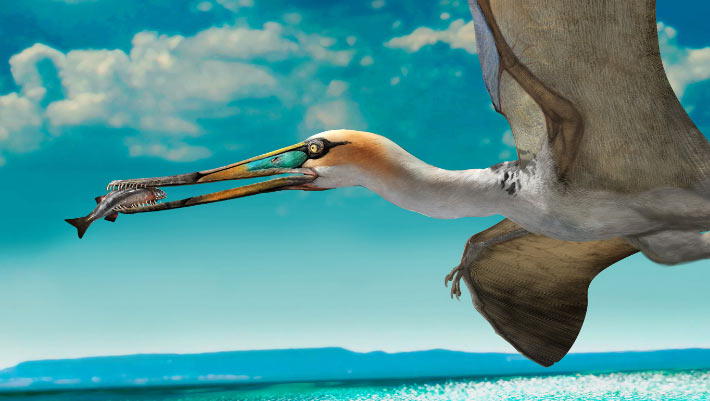Paleontologists have discovered and described a new ctenochasmatid pterosaurian mandible from the Late Jurassic Portland Limestone Formation of southern England.
“Pterosaur remains are rare in the Upper Jurassic layers of the United Kingdom, consisting mostly of isolated bones or fragments of bones,” said University of Portsmouth paleontologists Roy Smith and David Martill.
“Many records of Late Jurassic pterosaurs in the United Kingdom are of little more than historic interest, and include named species now regarded as nomina dubia.”
“Nonetheless, some material is diagnostic, and several species have stood the test of time.”
“By far the majority of Upper Jurassic pterosaurs in the United Kingdom have come from the Kimmeridge Clay Formation of southern England, with just a few occurrences from the Oxfordian part of the Oxford Clay Formation of southern and eastern England, and a single occurrence from the Kimmeridge Clay Formation of Scotland.”
“Despite this dearth of material, there have been some occurrences of associated material and the near complete skull of Cuspicephalus scarfi at the type locality of the Kimmeridgian stage.”
The new pterosaurian specimen is a mandible with at least two, possibly three teeth.
The fossil dates back to the Tithonian age of the Late Jurassic epoch, approximately 147 million years ago.
It represents the geologically youngest Jurassic pterosaur from the United Kingdom.
“The specimen is an isolated mandible lacking most of the postsymphyseal parts of the rami,” the paleontologists said.
“It is identified as pterosaurian on account of its very thin compacta and elongate form of the mandible.”
The new specimen was found in the Portland Limestone Formation of Dorset, southern United Kingdom.
It represents the first pterosaur skull material to be documented, described and figured from this formation.
“The specimen was likely first found when a quarryman split the stone using the standard ‘feather…
Read the full article here

